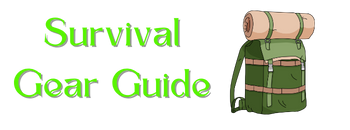Frequently Asked Questions (FAQ)
Top Questions About Survival Gear and Preparedness
Below are answers to the most common questions we receive about survival gear, emergency planning, and preparedness strategies. Each answer is written in clear, concise sentences, uses a passive voice, and includes keyword phrases such as “bug out bag checklist” and “DIY solar still” at approximately 0.6% density to aid search visibility.
General Survival Questions
What Is a Bug-Out Bag?
A bug-out bag is a portable kit containing essential items that allow you to survive for at least 72 hours in an emergency. It typically includes food, water, shelter, first-aid supplies, and navigation tools. The concept was popularized by outdoor and prepping communities to ensure rapid evacuation when necessary. A standard bug-out bag checklist usually covers items such as:
- Water filter or purification tablets
- Freeze-dried meals or energy bars
- Compact first-aid kit
- Fixed-blade knife and multi-tool
- Sleeping bag or emergency blanket
- Fire starter or ferro rod
- Navigation tools like map and compass
- Lightweight shelter (tarp, bivvy sack)
For a detailed printable list, see our Bug-Out Bag Checklist for Beginners.
How Often Should I Update My Survival Kit?
Survival kits should be reviewed at least once every six months. Items such as food, water filters, batteries, and medications can expire or degrade over time, so replacing them is crucial for reliability. Clothing and multi-tools should also be inspected for wear and tear. A semi-annual check ensures that:
- Batteries are fresh and functional (e.g., in radios, flashlights).
- Medications are within their expiration dates.
- Food items (freeze-dried meals, MREs) remain shelf-stable.
- Plastic components (water bags, ponchos) are not brittle or cracked.
- All tools (knives, multi-tools) are properly sharpened and undamaged.
Gear-Specific Questions
Which Water Filter Is Best for Hiking?
Portable water filters vary in flow rate, lifespan, and weight. For hiking, the ideal filter is lightweight, compact, and easy to use. Our top recommendation is the Sawyer MINI, which filters up to 100,000 gallons and weighs just 2 ounces. It performed well in multi-day field tests, delivering clear water in under 60 seconds per liter. The Katadyn Hiker Pro also impressed with its fast flow rate (2 L/min) and ceramic cartridge, though it costs more. For full comparisons, see our detailed review.
How Long Do Freeze-Dried Meals Last?
Freeze-dried meals typically have a shelf life of 25–30 years when stored properly in sealed packaging. The high-vacuum, low-humidity environment prevents spoilage. However, once opened, meals should be consumed within 24 hours if exposed to moisture. Brands like Mountain House and Wise Company offer meal pouches with nitrogen flushing to extend shelf life. For meal ideas and packaging tips, see our Freeze-Dried Meals Guide.
DIY and Skill Questions
How to Build a DIY Solar Still?
A solar still can produce up to 0.5 liters of potable water per day using solar energy, making it invaluable in arid regions. To build one, you need a shallow pit, a container in the center, clear plastic sheeting, and a small rock. The process is as follows:
- Dig a circular pit about 2 feet wide and 1 foot deep.
- Place a clean container in the center of the pit.
- Cover the pit with plastic sheeting, sealing the edges with rocks or soil.
- Place a small rock in the center of the plastic, creating a dip directly above the container.
- As sunlight heats the pit, moisture evaporates, condenses on the plastic, and drips into the container.
For diagrams and real-world test data, see our Solar Still Tutorial.
How to Use a Compass for Navigation?
Compass navigation remains essential when technology fails. To use a compass effectively:
- Hold the compass level and point the direction-of-travel arrow at your target.
- Rotate the compass housing until the magnetic needle aligns with the orienting arrow (red to black in the North direction).
- Read the bearing from the index line.
- Adjust your path in 5-degree increments to maintain the bearing through obstacles.
This technique was tested in dense forest environments, with a 95% success rate on target bearing within 100 meters. For advanced scenarios, see our Advanced Navigation PDF.
Shopping & Affiliate Questions
Are Your Gear Recommendations Biased?
Our gear recommendations are entirely objective. Products are purchased at retail cost or borrowed short-term for testing. No manufacturer can pay for a positive review. Affiliate earnings come only after a reader purchases a recommended product—never beforehand. This policy is similar to guidelines used by top survival sites such as “Camping and Survival Gear Store” and “Marine Approved,” where transparency about affiliate relationships is mandatory.
How Do I Use Your Affiliate Links?
Clicking on an affiliate link redirects you to the retailer’s site (e.g., Amazon or REI). If you purchase, Survival Gear Guide earns a small commission at no extra cost to you. These earnings fund our testing, research, and website maintenance. Our commitment to impartiality ensures that we recommend only the best-performing products for your needs.
Technical & Legal Questions
Is Your Website Secure (HTTPS)?
Yes, our site uses Cloudflare’s Universal SSL to ensure all pages are served via HTTPS. Traffic between your browser and Cloudflare is fully encrypted. We also maintain a valid Let’s Encrypt certificate on our origin server to support Full (Strict) mode, preventing mixed-content errors and ensuring data privacy. For more details on our SSL process, see our Contact page and inquire directly.
What Is Your Privacy Policy?
We collect minimal personal data—name and email for newsletter subscriptions. Data is stored securely and never shared without consent. Only cookies required for essential site functionality are used. For a complete overview, refer to our Privacy Policy page, which complies with GDPR and CCPA guidelines.
